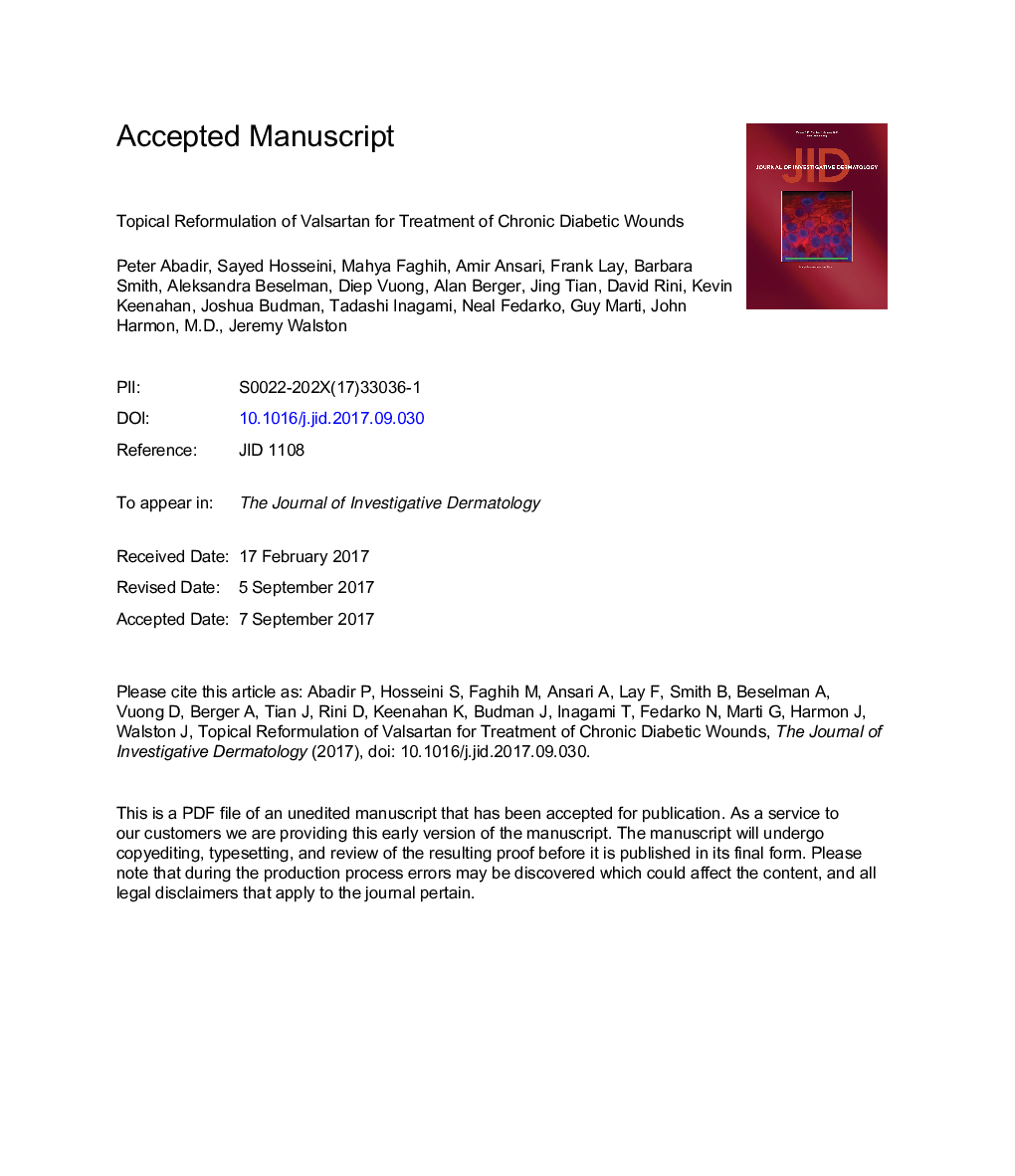| Article ID | Journal | Published Year | Pages | File Type |
|---|---|---|---|---|
| 8716179 | Journal of Investigative Dermatology | 2018 | 33 Pages |
Abstract
Chronic wounds are among the most devastating and difficult to treat consequences of diabetes. Dysregulation of the skin renin-angiotensin system is implicated in abnormal wound healing in diabetic and older adults. Given this, we sought to determine the effects of topical reformulations of the angiotensin type 1 receptor blockers losartan and valsartan and the angiotensin-converting enzyme inhibitor captopril on wound healing in diabetic and aged mice with further validation in older diabetic pigs. The application of 1% valsartan gel compared with other tested formulations and placebo facilitated and significantly accelerated closure time and increased tensile strength in mice, and was validated in the porcine model. One percent of valsartan gel-treated wounds also exhibited higher mitochondrial content, collagen deposition, phosphorylated mothers against decapentaplegic homologs 2 and 3 and common mothers against decapentaplegic homolog 4, alpha-smooth muscle actin, CD31, phospho-vascular endothelial growth factor receptor 2, and p42/44 mitogen-activated protein kinase. Knockout of the angiotensin subtype 2 receptors abolished the beneficial effects of angiotensin type 1 receptor blockers, suggesting a role for angiotensin subtype 2 receptors in chronic wound healing.
Keywords
Related Topics
Health Sciences
Medicine and Dentistry
Dermatology
Authors
Peter Abadir, Sayed Hosseini, Mahya Faghih, Amir Ansari, Frank Lay, Barbara Smith, Aleksandra Beselman, Diep Vuong, Alan Berger, Jing Tian, David Rini, Kevin Keenahan, Joshua Budman, Tadashi Inagami, Neal Fedarko, Guy Marti, John Harmon, Jeremy Walston,
